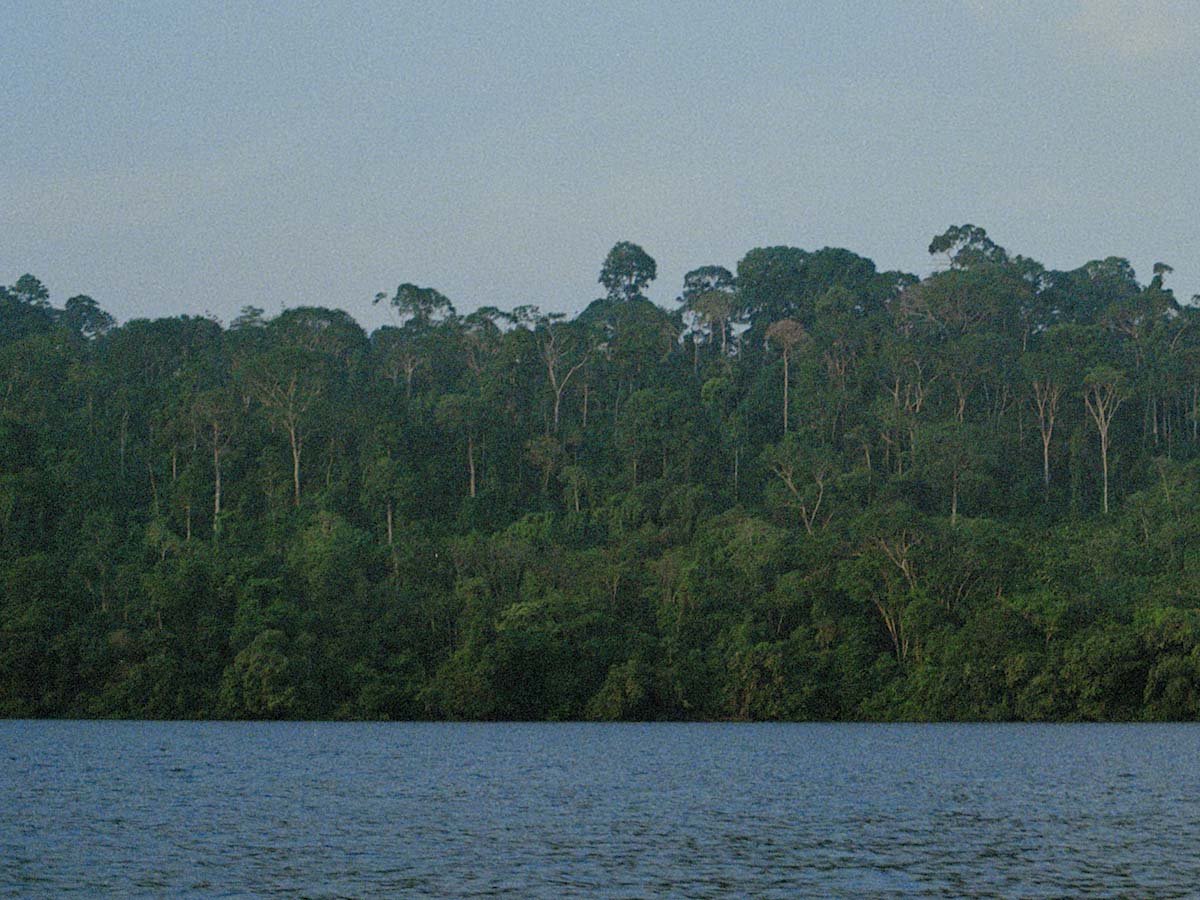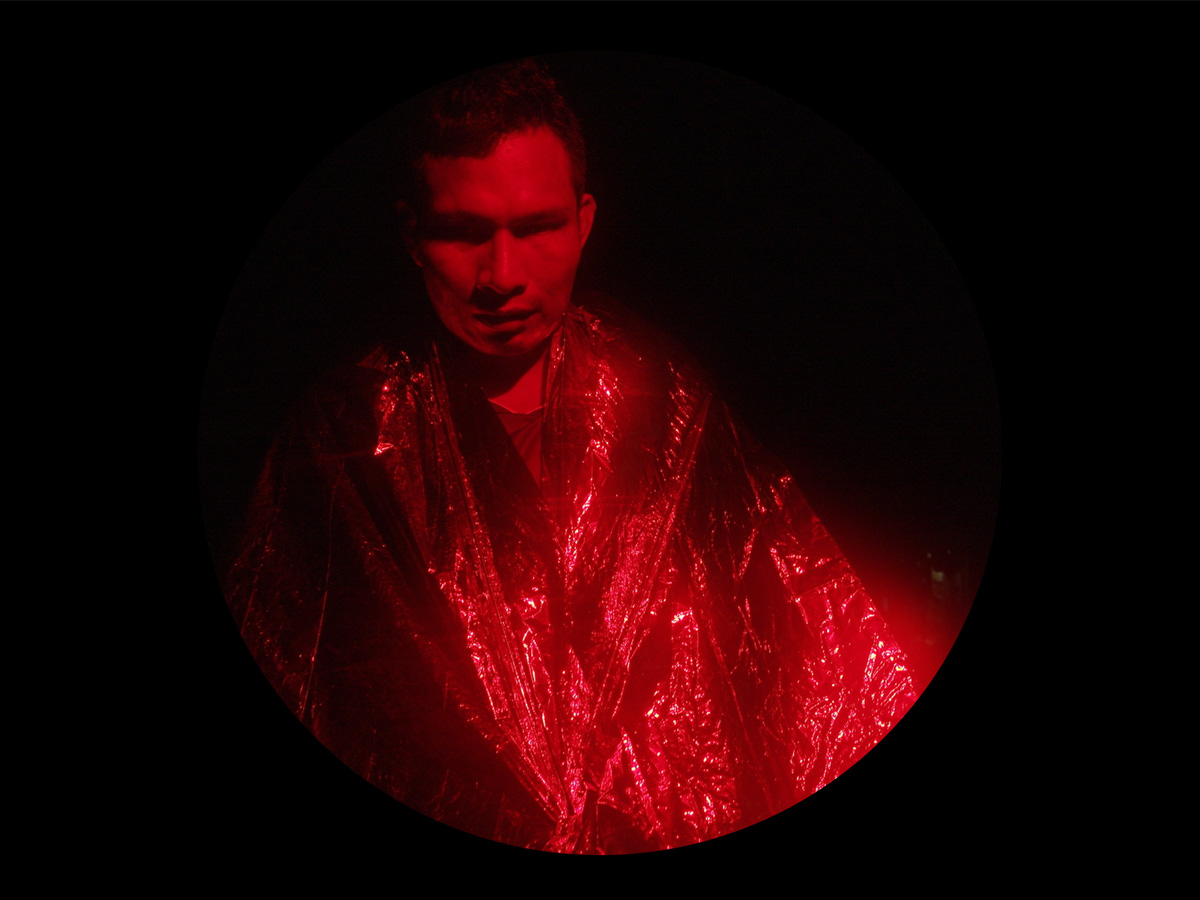
0.2 Milligrams of Gold
Eight thousand five hundred kilometres lie between the Amazon and the Ardennes. In his home country Brazil, filmmaker Diego looks at the inaccessible forest from the outside. Its Belgian counterpiece, however, is easier to explore. Here, everything is laid out by people and neatly ordered. A geologist, a gold miner, and an astronomer provide insights for a philosophical exploration of the origin of existence and the future of our planet.
The construction of a hydropower plant in northern Brazil threatens to flood at least thirteen municipalities. This is why filmmaker Diego Quinderé de Carvalho felt the need to immortalise those places on film as quickly as possible. An empathetic photographer, Quinderé de Carvalho approaches the area with watchful nostalgia. He frames the villages in a subdued way; his photographs communicate a sense of serenity. The towns are portrayed in ignorance of their ill-fated sunken destination. Large parts of the Amazon forest must also make way for the power plant. Yet, the filmmaker finds only two images of the renowned rainforest out of a pack of five hundred photographs. They are detached vistas that reflect his incapacity to master this difficult-to-penetrate mass. The Amazon forest is the green and earthly counterpart of an astronomical black hole: it attracts and instills fear, yet it is so compact that it seems impossible to frame from the inside.
Eight thousand five hundred kilometers further, the Brazilian filmmaker finds a way to access a forest in the Belgian Ardennes. The contrast with the Amazon forest is striking. The Ardennes forest is open, accessible, and human-sized. The filmmaker speaks of order, control, and harmony. This is also how he tries to organise his images: static, steady, and in line with the vegetation. All the trees here were planted less than sixty years ago, yet many are already being cut for timber yield. But that, too, is part of the sustainability plan. The Ardennes forest is a supposed victory of man as if we were in bitter competition with our non-human companions.
The South American filmmaker says he came to Europe to observe the past. He wonders whether the highly orchestrated choreography of trees in the Ardennes is a blueprint for the forests of the future. He wants to explore the past, capture the present, and project the future onto it. Fixing specific topoi not only allows for a spatial investigation but also a temporal one. In 0.2 Milligrams of Gold, the forest acts as a chronotope, in which space and time are intimately connected.
A geologist appearing in the film sees himself primarily as a storyteller. His job, then, is to create a narrative around a particular territory. The materiality of the place is (literally) tapped to unlock stories. In this way, the filmmaker becomes a geologist cutting through layers of stone to uncover the colonial history of the Ardennes region. The Celts mined gold in the Belgian Ardennes five hundred years before our era. Their diligence ensured that even today, gold remnants can be found on the banks of its rivers. As a result, a familiar gold rush continues to run through the area: one local resumes his quest to find the precious metal day after day—only sometimes, this goes smoothly. That is why the man and the filmmaker stage its discovery. It is a crucial scene with symbolic connotations. To quote Diego Quinderé de Carvalho: “It is easier to film what you can control.” That is why he points his camera towards the Ardennes, not the impenetrable Amazon forest. The Belgian woods are made to serve people. Conversely, the rainforest cannot be tamed and is challenging to translate into intelligible forms.
Besides a philosophical reflection on the concept of ‘lieu de mémoire’, the film is also an appeal to protect non-human phenomena in their uniqueness. The filmmaker concludes that he walks on paved forest paths because they are easier to control and more welcoming to man. Without naming it directly, this audiovisual essay touches on the Anthropocene: the era in which the earth suffers the consequences of human activity. Large areas of the forest must give way to a power plant; fossilised nature must be extracted to fuel the idea of human progress. Even man-made nature is soon consumed once again by the insatiable human voracity.
In a time when Earth’s history is becoming increasingly hybrid, it is tempting to stick to the known paradigms of time and space. The Amazon rainforest transcends those spatiotemporal variables through its massive scale and obscure impenetrability. The rainforest is a sublime mass that exceeds human perceptual abilities and induces fear. The safe and distant position from which Diego Quinderé de Carvalho portrays the forest is akin to Edmund Burke’s theory of the sublime. According to the conservative philosopher, the sublime can only be experienced from a position that does not threaten our existence. The observer of that phenomenon has a cathartic moment when he realises that his continued existence is not in danger. It is a form of deep anxiety that culminates in relief and demands humility. Unfortunately, such humility is not very common among humans. The filmmaker makes this painfully clear with a scene that discusses the possibility of mining gold from stars or meteorites. Ultimately, humanity is one big coloniser, confiscating all forms of wealth, eager to plant the flag of homo sapiens anywhere.
At no point does 0.2 Milligrams of Gold attempt to approach the sublime forest. His essay does not examine non-human forms of time or space. What drives the film is the filmmaker’s awareness of his attitude towards the hard-to-tame nature. Diego Quinderé de Carvalho is humble, mainly playing on the human inability to coexist ecologically with natural phenomena that are difficult to translate into typically human forms.
In 20th-century Colombia, resistance fighter Yarokamena, a member of the indigenous Uitoto tribe, called for rebellion against violent exploitation of the rubber mining industry in the Amazone and invoked the spiritual powers of war.



